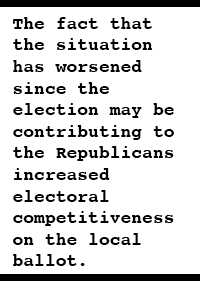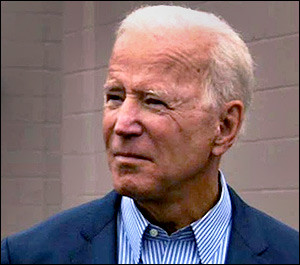By Jim Ellis
July 14, 2021 — For most of the special election campaign to replace Housing & Urban Development Secretary Marcia Fudge in her vacated US House district, it appeared that former state senator and Bernie Sanders for President 2020 national co-chair Nina Turner was a lock for the Democratic nomination. As the contest steams toward an Aug. 3 special Democratic primary election date it appears, however, that the political battle is far from over.Cuyahoga County Councilmember and County Democratic Party chair Shontel Brown is making major strides that have come to the surface in the past two weeks. According to a just-released Normington Petts survey for the Brown campaign (July 5-8; 400 OH-11 likely Democratic special primary election voters, live interview), ex-Sen. Turner now holds only a 43-36 percent margin over Brown with the 11 minor Democratic candidates splitting the remaining 7 percent preference total.
In the firm’s first poll of this race back in April, Turner led Brown, 42-10 percent. As Jill Normington notes in her released polling synopsis, the latest results find Brown gaining 26 support percentage points between the time the two Normington Petts polls were conducted as compared to just one for Turner.
With recently announced endorsements from Hillary Clinton, House Majority Whip Jim Clyburn (D-SC), Buckeye State 2018 gubernatorial nominee Richard Cordray, Ohio US Rep. Joyce Beatty (D-Columbus), the Congressional Black Caucus, and 18 local mayors, in addition to an impressive array of community, religious, and labor leaders from the district, it appears Brown is gaining serious momentum with three weeks remaining in the primary cycle.
Turner has her own strong support organization, too, most notably from Cleveland Mayor Frank Jackson, state Senate Minority Leader Kenny Yuko, former Ohio Democratic Party chairman David Pepper, and the Justice Democrats led by New York Rep. Alexandria Ocasio-Cortez. Turner also draws support from her own group of a dozen Ohio state legislators and many local officials, along with a large number of Cleveland and Akron community and religious leaders.
Originally, Turner was lapping the entire field in terms of money raised and spent. Now, however, Brown has caught her in this area, too. According to the Daily Kos Elections site, Turner has spent $1.2 million in the campaign as compared to Brown’s $617,000, but they also track another $475,000 coming in from an outside negative ad expenditure targeted against Turner from the Democratic Majority for Israel organization.
Continue reading








